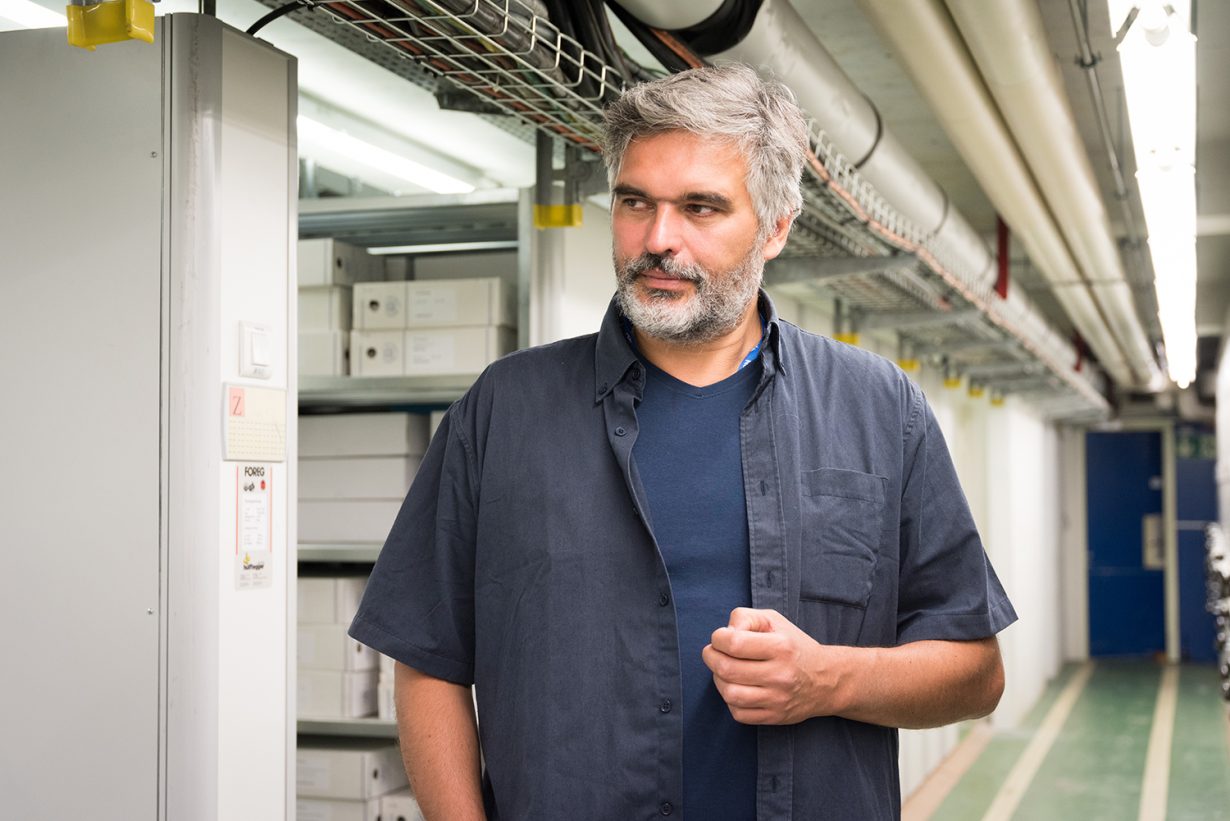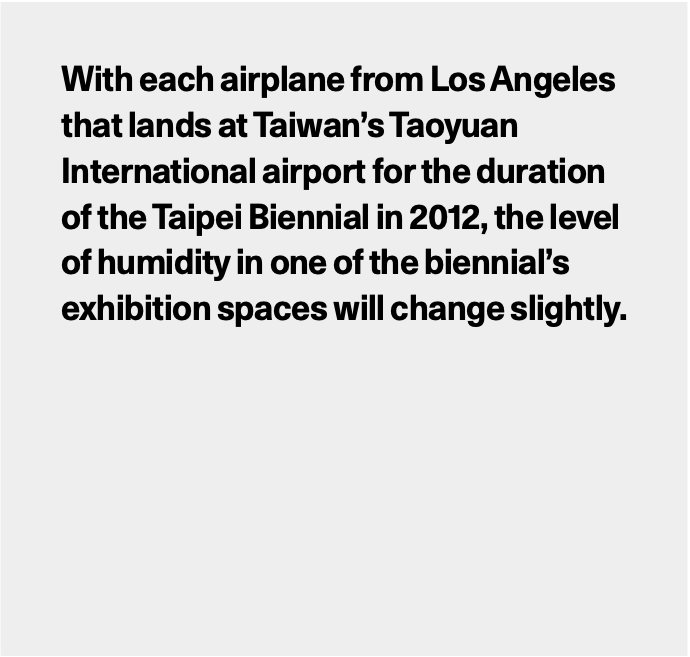If you’re hoping for a glimpse of the Croatian artist’s work at the 59th Venice Biennale – look anywhere but the Croatian Pavilion

If you visit the Venice Biennale this year and want to see the work of Tomo Savić-Gecan, who represents Croatia at the storied event, here’s a tip: look anywhere but the Croatian Pavilion. That venue is likely to be closed, or at least empty. Instead, Savić-Gecan’s project will locate itself unpredictably in other pavilions and exhibition spaces, and you may experience it without even realising it. Four times a day, five performers will be given instructions by an AI algorithm – which is in turn responding to information in the lead news story from a randomly chosen news outlet somewhere on the planet – about where to position themselves, how long to stay there, how to move, even what to think about. They won’t be shouting or dancing; expect subtle, but not quite natural, movements like head-tilting, pretending to be touching a wall or moving in slow motion: humans impelled by artificial overlords, maybe.

You can, if you like, cheat a little by visiting an information kiosk on the via Garibaldi, where someone will tell you where the performances are happening that day. Or you can drift through the biennale and hope you see something. But if you don’t see anything, that doesn’t mean you haven’t, in a way, partaken in Savić-Gecan’s Untitled (Croatian Pavilion) (2022) – all the Dutch-Croatian artist’s works since he left art school in Milan in the mid-1990s have been effectively untitled – and if you do see something, that doesn’t necessarily mean you’ve experienced his artwork. If that sounds contradictory, bear with me and buckle up. Savić-Gecan’s practice is one of the most quietly – an appropriate word – extreme reconsiderations of the practice of artmaking you’re likely to find today. In some ways it intersects with classic 1960s conceptual strategies of dematerialisation, since his art is primarily not object-based or permanent; and yet it’s also strongly materialist (it needs people, places, all kinds of other things). The fact that there are no illustrations for this article – Savić-Gecan’s preference, in catalogues, magazines and elsewhere, is for a blank space where an image should be, or an image-text that describes the artwork’s operations – doesn’t mean that there’s nothing to see in his art, though sometimes there’s not much and often you might feel like you’re standing in the wrong place. Instead, there’s another place to think about.
For example: 17 years ago, when Savić-Gecan made an earlier appearance at the Venice Biennale, he presented a line of text on a gallery wall that informed the viewer of a relationship between the number of visitors entering an art space in Amsterdam and the temperature of a public swimming pool in Tallinn. Also in 2005 Savić-Gecan ‘showed’ at a Brussels gallery by removing the front window, sending it to Slovenia to be powdered and turned into 150 glasses, and in turn offering these as drinking vessels for the show’s run. By this point he’d put in a decade’s worth of reductive, evasive gestures. In 1994 he covered a gallery entrance in Ljubljana with a white wall; in 1996 he sealed off an area of exhibition space in Cleveland with hazard tape. For institutional exhibitions in 2011 and 2020, any phone calls received by the curator triggered changes in the temperature of the gallery space. Such interventions verge on the infinitesimal; as when, in 2006 in Austin, Texas, visitors were informed that Savić-Gecan had collaborated with a Dutch art magazine to publish an issue that was exactly 1mm smaller than its usual size. Meanwhile, the viewers were in an American city just over 8,000 kilometres away.

You’re cued, then, to ask who is having the art experience. The answer, in ontological terms, flip-flops. If you’re holding the art magazine in Amsterdam, you’re not standing in the show in Austin, thinking about Savić-Gecan’s philosophical ideas. In such a way, and in various manners, the artist has raised the possibility of creating works of art that are impossible to fully experience (and thus, not at all irrelevantly, commodify even as a document) – a part of his works tends to be already gone by the time you show up. In 2005 Savić-Gecan participated in a group show in Brooklyn, for which he used a hidden gizmo to record visitors’ entries and exits; two years later he used that information to adjust the controls on a thermostat in another show he was participating in; and then, a decade later, he used the data again on another thermostat, in another gallery, to adjust the humidity in the space. Hands up if you saw all those shows. If you did, maybe Savić-Gecan will use the info again, in a show you’ll miss.
Anyway, this is just part of it. Savić-Gecan also absents himself from the interpretative process of his work. It’s a self-erasure that constitutes an enlargement, since Savić-Gecan accordingly opens the readings of his art while at the same time destabilising them. He encourages curators to promulgate their own interpretations, and as they do so, something fundamental – the ‘truth’ of what his art means – is seemingly allowed to escape, to dissolve. Instead, the art is populated by the beliefs of the curators at hand; and then, in turn, those of the viewers. The art, as with a number of his projects, becomes a marked-out empty space. It could be, as the pavilion’s curator, Elena Filipovic, has suggested, that ‘the “exhibition” might not be the name for a location and duration to show anything at all, but instead the name for a place where a public has come together to both individually and collectively allow an aesthetic experience to be created’.

The more you think about Savić-Gecan’s art, the more the contradictions both proliferate and sit in counterpoise. Sometimes it feels like there’s nothing to look at; and yet the work occupies space (and time). On the other hand, the art’s maker – or instigator – refuses to have it documented, so once the timeframe is over, it’s gone. Then again, it may be revived, albeit differently. It would be foolish to miss the playfulness in all this, also the absolute seriousness, and the continual inventiveness. Savić-Gecan, after all, is – as far as I know – the only artist who has taken a sample of air from a gallery in Amsterdam, had it sent to the European Laboratory for Particle Physics (CERN) in Geneva, where it was then turned into antimatter. Is the art in this case the air, the antimatter, the process, the idea? Make a choice, and Untitled (2018) slips through your fingers.
Untitled (Croatian Pavilion) partakes of all the intersecting angles on Savić-Gecan’s art. It is also, of course, open to curatorial interpretation. To me, Filipovic framed the project in technological terms: as well as exploding the concept of a national pavilion, she said, “it comments on the strange and insidious ways technology increasingly controls us (and our passive acceptance of it), but also, in our own post-truth era, it is an incredible commentary on the news and its relationship to power, nationhood, distribution channels, etc.” However persuasive that view, of course, it’s just Filipovic’s opinion, which in turn constitutes a structural component of the work. The latter waits to be filled in by the viewers who see it, who may in turn think of those who experience it as a rumour, which may not be a lesser mode of reception. And, of course, if you see someone moving a little robotically in a national pavilion this year, that means you’re not standing in another national pavilion, seeing another performer. In that moment Savić-Gecan, and his art, have slipped into freedom once more.
From the April 2022 issue of ArtReview